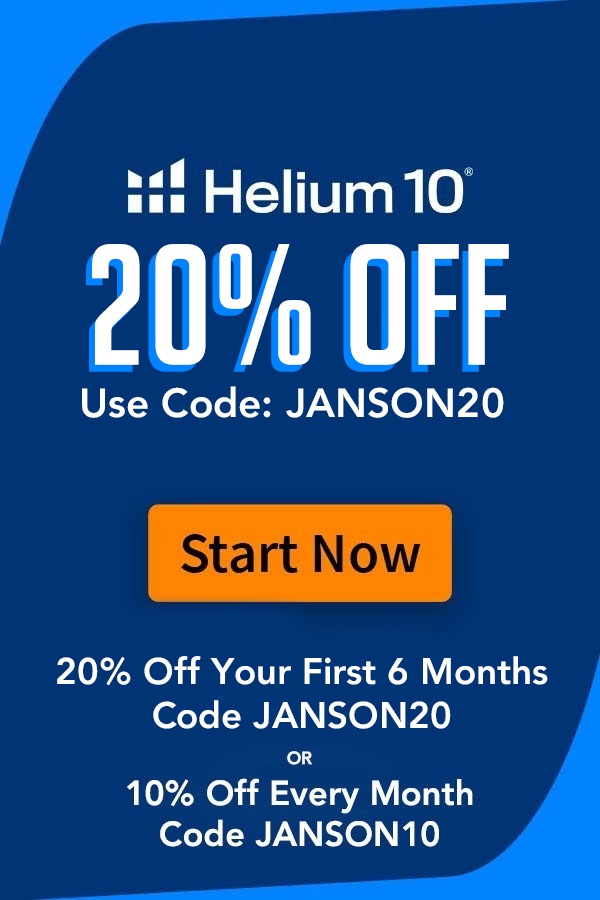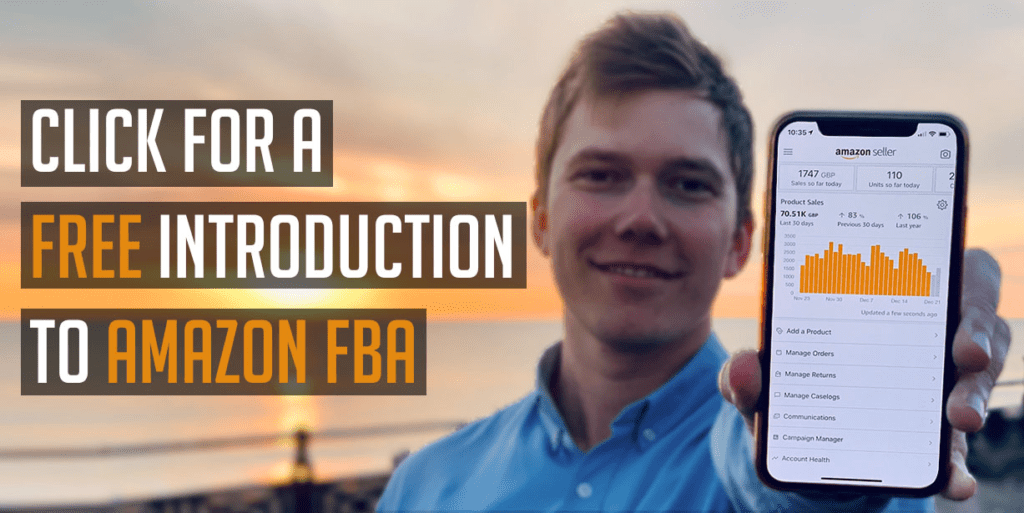
When I first started learning how to sell with Amazon FBA, there were areas that I found pretty difficult and overwhelming, and having coached over 1000 people on the topic of Amazon FBA since then, I’ve realized that virtually everyone struggles with these 5 challenges of selling on Amazon when they’re first getting starting.
To help you guys smash it the first time around when it comes to selling with Amazon FBA, I wanted to run through these problem areas and give you my best tips to beating them.
Positive Mindset

Throughout most of school, I was pretty naughty and got poor grades in anything to do with being creative. So, when I came across private labelling and Amazon FBA, the first thought that ran through my head was, “You can’t do this. You’re not good enough.” This negative mindset caused me to doubt myself and second think any decisions that I made. Because of that, I suffered from analysis paralysis when looking for products to sell, I questioned whether it was even possible for me to make money with Amazon FBA, and generally, my mind kept trying to put me off the opportunity all together, which made staying motivated very difficult indeed.
What really helped me to persevere and achieve my goal of giving myself an additional income stream, though, was immersing myself in the world of Amazon FBA as much as I could. I joined Facebook groups, followed accounts on Twitter and Instagram, and read as much Amazon FBA content as I could. Doing all of these allowed me to learn whenever I was scrolling on social media and kept my motivation and dedication high when I saw other people in the same situation as me achieving huge amounts of success.
So, if you’re new to Amazon FBA and feeling apprehensive about how big an opportunity this is or questioning whether you’re capable of it, my advice to get over those feelings and start building a long term positive mindset is to join those Amazon groups and start building your knowledge, network, and motivation.
Product Research
Finding a product to sell with Amazon FBA is a challenge, and when I was first going through the process, I was at times very close to giving up. Whenever I found something that ticked all of the boxes, it wouldn’t be long before doubts would start to creep when I’d find something that didn’t make it a perfect product.
This is exactly where I and many others go wrong – looking for a product that ticked all of the boxes and appeared to be perfect. Newsflash – those type of products don’t exist, and if they did, they’d be in incredibly competitive markets making selling them an unprofitable and boring venture.
It took me a while to figure this out, but any product that you end up selling on Amazon does NOT need to be perfect. Customers are not expecting perfection. They just want a well priced product that does the job it was made for, with more positives than negatives.
If you’re like many others who are finding themselves in the rut of doing endless product research and always thinking it’s not perfect enough, give yourself the push needed when considering a product to sell. What I do is that I ensure that it satisfies my 3 main criteria of sales demand, profitability, and an opportunity to differentiate, and then make an executive decision over whether I want to progress to the next stage, which is finding a supplier.
Sourcing A Good Supplier

Sourcing a supplier for your Amazon FBA product can be an absolute minefield, especially if you’re not familiar with some of the red flags that can indicate that the person that you’re talking to is either a scammer or going to be supplying you with a rubbish product.
Understanding whether you’ve found a good supplier is quite a challenge if you’ve not done it before, and it was something that I found very difficult when I first started looking for one. I remember one supplier who I thought was really nice tried endlessly to rip me off with high sample costs and imaginary charges and at one point even asked me to pay him directly in order to reduce his fees.
Having dealt with my fair share of suppliers over the years, I’ve become pretty good at being able to separate the good guys from the bad ones. Good suppliers will generally have a good level of English, they’ll be responsive and reply to your messages within 24 hours, and they’ll be willing to arrange the more custom parts of your order on your behalf, such as packaging, instructions, and insert cards.
Bad suppliers, on the other hand, will encourage you to place an order without receiving a sample and pay outside of Alibaba in order to reduce their fees – two things that you must never do. Additionally, sometimes, they can try to charge you extra fees for adding a logo on to your product or for arranging a sample on your behalf. To ensure this doesn’t happen to you, always confirm everything with the supplier up front, in as much detail as you possibly can, and that way there’ll be less disagreements and possible fall outs.
Launching On Amazon
Knowing how to launch and rank your product on page 1 is really important to understand, and it’s going to be critical to your long-term success. Now, that’s easier said than done. Because when you’re new to selling on Amazon, in reality, the launch and ranking process is difficult and overwhelming.
Over the past 4 years, I’ve launched over 20 products on Amazon, and so I like to think that in that time I’ve learnt about what’s important when it comes to launching a successful product, which boils down to 3 components.
- A listing that converts: You need to ensure that your title, bullet points, description and above all, images, are top tier, and that they give the customer tonnes of reasons to buy from you over anyone else. I’ve seen thousands of Amazon listings over the years and it’s honestly surprising that many sellers make this mistake.
- Product reviews: Launching without any reviews at all can be done, but it’s going to result in you converting less sales, which means a slower climb up the page rankings. Before you start to turn on your advertising campaigns in order to drive sales, ask 2 to 3 distant friends and family members to buy your product and leave you a review.
- A good price: The third component of a successful launch, is to start selling with a price that is so attractive that customers have a hard time saying no. While this might be hard to do in the short term because there’ll be little profit in it, think long-term. The faster that can show Amazon just how much customers love your product, the quicker you’ll climb Amazon’s page ranking and the more profit you’ll make overall.
PPC

After product research, I’d say that advertising on Amazon is probably one of most difficult areas to conquer. Just when you think you’ve got a handle on it, you’ll find that your ad costs suddenly sky rocket, making you question whether you understood it at all.
My general advice on PPC advertising is to test, test ,and then test some more, and to understand that every day yields different results. One day of underperformance doesn’t mean that the next is also going to be bad. Some days can just suck when it comes to profitability, and others can be amazing, for no reason whatsoever. Never let single days or even single weeks impact your decision making when it comes to advertising on Amazon. You should always look over the longer term, especially when it comes to turning campaigns off and making big changes to the type of keywords that you want to bid on.
PPC is hard and it can be pretty overwhelming when you first start doing it, so watch as many tutorials as you can on the topic, and before you set any campaigns up, make sure you have a good idea of your most relevant keywords with search volume, which you can source using tools such as Helium 10. If you’re still baffled over how PPC works, take a look at my PPC mastery course, which is currently on sale!
Conclusion
Four years ago, when I first came across the world of Amazon FBA, I found pretty much every part of it to be challenging and at times overwhelming. Now, it won’t say it’s easy, but it’s certainly a lot easier. If you are finding any part of it difficult, keep on moving and understand that every day of effort that you put in now, will make the entire process a lot easier later. Hopefully these tips help you along the way.
To learn more about my journey, read about my honest review on Amazon FBA after a couple of years of being a seller!
If you want to learn how you can create an Amazon FBA business yourself, then check out my free training where I’ll teach you everything you need to launch your first product on Amazon and scale to $5,000+ in monthly profit.
Or if you’re ready to begin your journey and want to start with the best chances of success, apply to become a member of HonestFBA’s training programme where you’ll receive guidance & support from our team of 7-figure Amazon FBA seller experts whenever you need it.





